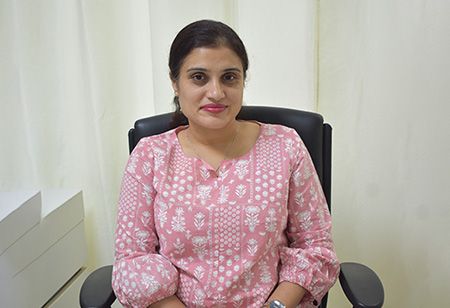Dr. Poovamma CU - Senior Consultant & Director - Breast Oncology, Cytecare Hospitals

Dr. Poovamma CU, Senior consultant in breast Oncology at Cytecare Hospital, recently spoke with India Pharma Outlook and shared her views on how innovations such as AI-driven imaging and personalized medicine are currently transforming early breast cancer diagnosis, with more targeted therapies emerging, how an early diagnosis is influencing treatment options that are less invasive and more personalized compared to past approaches, and more.
Dr. Poovamma CU is a Senior Consultant and Director of Breast Oncology at Cytecare Cancer Hospitals, with over 12 years of experience. She specializes in oncoplastic surgery, mastectomy, and breast reconstruction. An accomplished author and educator, she is the first graduate of India's Fellowship in Breast Diseases.
With AI-driven imaging and personalized medicine gaining momentum, how are these innovations currently transforming early breast cancer diagnosis, and what future developments can we anticipate in enhancing accuracy and accessibility?
The accuracy in identifying small tumors and assessing the likelihood of being malignant has enhanced significantly with the implementation of Artificial Intelligence in imaging. This advancement is anticipated to reduce recall rates as well as unnecessary biopsy rates for benign conditions. This allows for more precise detection of early-stage breast cancers. When cancers are identified at stage 1, the long-term prognoses as well as outcomes are enhanced markedly. Also, owing to this patients would require less aggressive treatment.
Extensive research is conducted in terms of personalized medicine. Today we examine the biological characteristics as well as molecular subtypes at the individual level instead of generalizing the tumors. And, this means every patient should undergo specific tests to determine what kind of treatment is most effective for them, going away from a one-size-fits-all approach. The toxicity from unnecessary medications as well as the side effects that are associated is decreased leading to better long-term prognoses for patients as a consequence.
With more targeted therapies emerging, how does early diagnosis now influence treatment options that are less invasive and more personalized compared to past approaches?
For smaller tumours specifically in breast cancer which are hormone-positive and HER2-negative, some of the patients would not need chemotherapy at all. This means that the overall burden of the toxic treatments can be reduced significantly. Furthermore, there are numerous opportunities for conserving the breast as well as potentially avoiding mutilating surgery if the cancer is detected at an early stage. In the case of more aggressive cancers, we would be able to limit chemotherapy to minimal doses, if they are identified extremely early.
The cure for stage 3 breast cancer is only 75 to 80 percent, while the cure for stage 1 is 96 to 97 percent. This decreases dramatically to 25 percent for stage 4 breast cancers. In India, 1 out of every 2 women diagnosed with breast cancer succumbs to cancer due to late diagnosis. Therefore, we can achieve better long-term outcomes as well as minimize the requirement for the need for toxic therapies, with earlier detection & less invasive treatment options.
How is the growing focus on genetic testing and familial risk assessment influencing early detection strategies for high-risk individuals today?
Since genetic testing which involves a simple blood test has become significantly more accessible today. Also, the results would be available in 2-3 weeks. These tests were expensive a decade ago, costing about 75000 – 100000 rupees. And, today, we conduct these tests routinely for anyone with even a slight family history of breast cancer.
Further, we render immediate counseling on risk reduction strategies once we identify patients with a genetic predisposition which includes those with BRCA mutations. These may comprise chemoprevention with medication or risk-reducing surgeries. One of the major advantages of this include the reduction in testing costs and these have helped us in evaluating as well as testing more patients effectively. We promptly render counseling and support. As this shift has made a huge impact, we are increasingly recognizing cases of familial or genetic breast cancer.
What future strategies or innovations are being developed to increase awareness and accessibility of early breast cancer screenings globally?
There are several ongoing studies that are exploring innovations as well as technologies that are aimed at early detection of breast cancer. Thermography is one of the emerging areas of interest, particularly thermolytics, which is being reexamined to observe if a simple and non-contact scan can detect abnormalities in the breast which prompts further testing and this could be useful specifically in community settings. A program to train community nurses/ medical tactile examiners (visually challenged) to perform breast examinations in the periphery and to recall patients for additional tests is also in place. Many innovations are also being explored to see how effective they are in detecting breast cancer early.
Breast cancer - the most common cancer today in women, accounts for about 25 – 27 percent of all cancers in women, today. We are hopeful that more accessible as well as user-friendly screening modalities will become available in the coming days, with the ongoing research. However, a mammogram is the gold standard as of now since nothing else has surpassed the accuracy as well reliability they offer. We hope to see easier as well as widely available screening methods in the market, with more data as well as advancements.